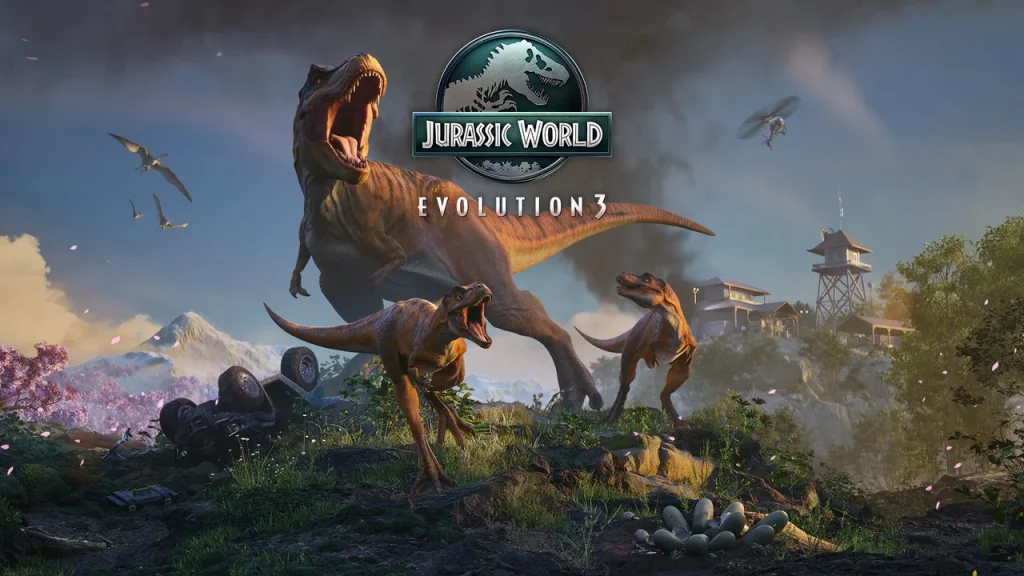
Ever since the first Evolution game, dinosaur-park management sims have had a special place in my heart: equal parts “wow, a T-rex!” and “oh no, a T-rex!” With Jurassic World Evolution 3, Frontier asks: what if you could really play god over scaly, roaring beasts, sculpt your own island, and maybe, just maybe, watch your park go from pristine dream to absolute prehistoric meltdown?
Released on October 21, 2025, for PC, PS5 and Xbox Series X/S, the game arrives with the promise of deeper systems, bigger creative freedom and, yes, more “life finds a way” moments than ever.
“Oh, yeah. Oooh, ahhh, that’s how it always starts. Then later there’s running and screaming.”
It’s the third major chapter in the Jurassic World Evolution series, so naturally, I went in expecting a little more than the previous two. Let’s dive in.
Gameplay
At its core, Jurassic World Evolution 3 keeps the familiar park management loop that fans know and love: create enclosures, balance finances, manage guests, research new species, and try desperately to stop everything from eating everything else. The foundations are the same, but this time, the systems feel far more alive.
The biggest shake-up is the introduction of dynamic life cycles. You don’t just clone adult dinosaurs anymore; now you oversee breeding, juvenile stages, and generational genetics. Each dinosaur can inherit traits from its parents, meaning you can selectively breed for temperament, colour, or resilience. Watching a baby Triceratops grow into a full-sized tank of muscle feels surprisingly rewarding, and occasionally heartbreaking when nature takes its course.
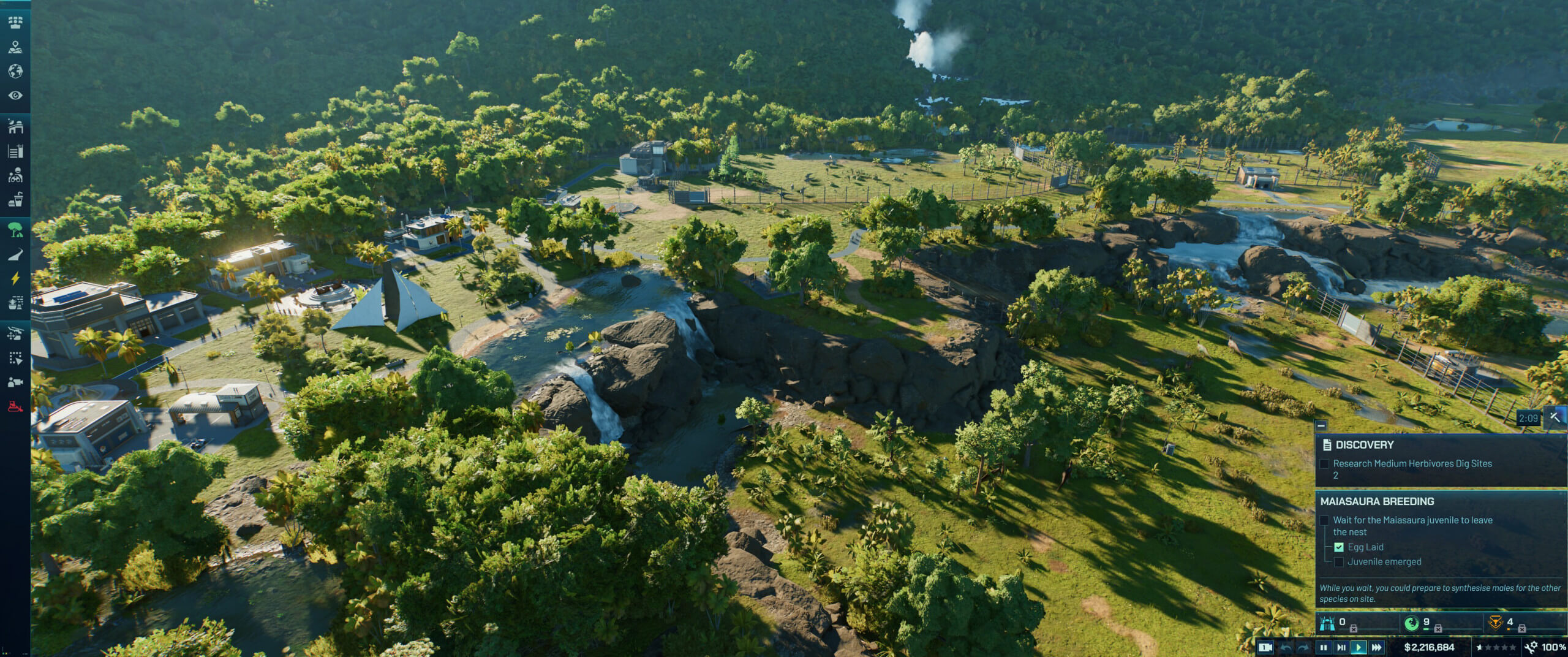
Building your park also feels far more flexible. The terrain tools are completely overhauled, allowing cliffs, rivers, plateaus, and deep water habitats that can dramatically change how your dinosaurs behave. You can now design multi-level enclosures and even build observation decks into rock faces for cinematic guest views. The modular building system, another major addition, lets you customise structures with different facades, materials, and layouts. Gone are the days of identical research centres and visitor hubs; now, every park feels like a personal masterpiece (or disaster).
Missions and campaign structure have also evolved. Instead of a linear story confined to a handful of islands, the campaign now spans multiple regions across the world. You might start in a humid rainforest sanctuary, move to a dusty desert reserve, and finish in a futuristic Arctic facility where keeping creatures warm becomes a new management challenge. Each area introduces environmental hazards such as sandstorms, earthquakes, or cold snaps, forcing you to adapt your strategies and park designs.

The game’s sandbox and challenge modes return and are bigger than ever. Sandbox mode in particular benefits from the new building tools, effectively becoming a creative playground. Challenge mode pushes your management skills to the limit with scenarios like “no electricity,” “limited staff,” or “frequent dino escapes.” It’s pure chaos, in the best possible way.
Of course, no Jurassic World game would be complete without the occasional catastrophe. Power failures, sabotage, and storms still lead to the inevitable “uh oh” moment when a T-rex decides to redecorate the main street with tourists. It’s as thrilling and nerve-wracking as ever.
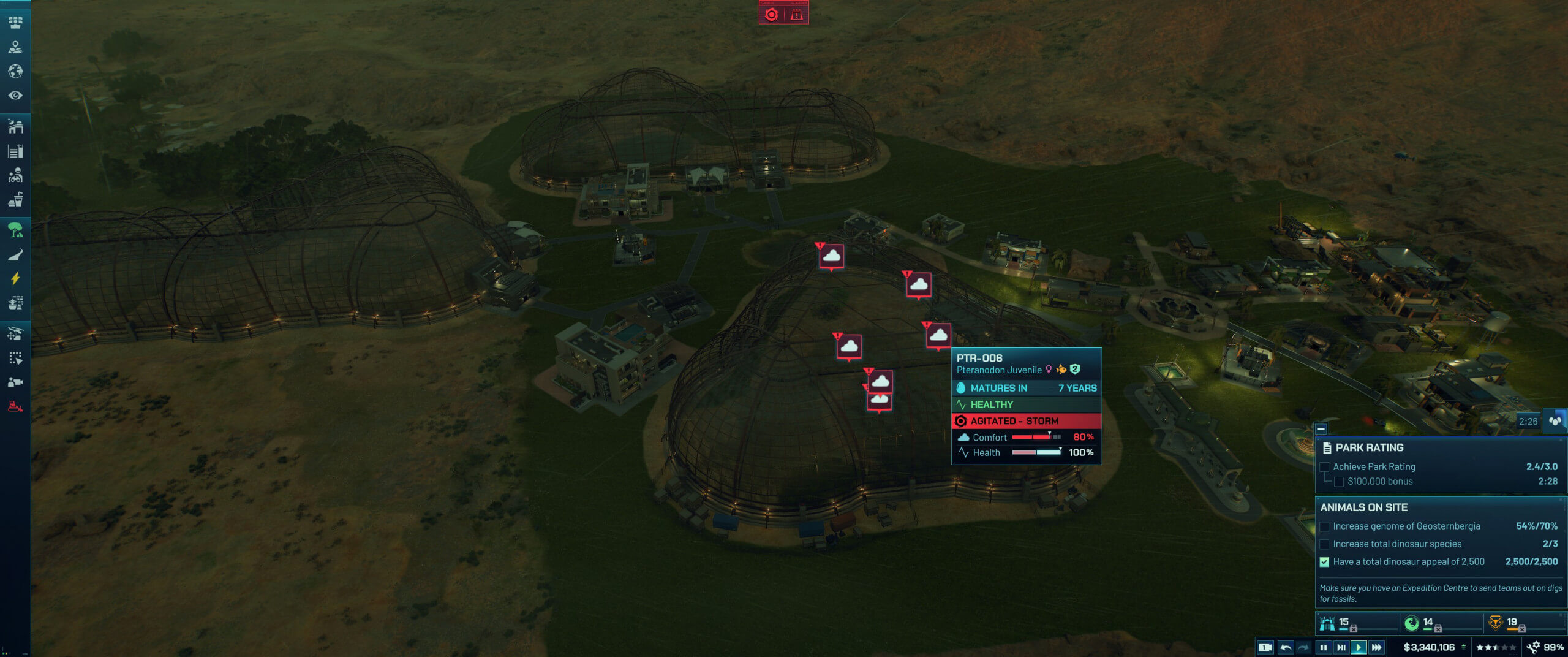
If Evolution 2 was a solid sequel that expanded the series, Evolution 3 feels like a genuine reinvention. The previous game introduced aviaries, marine reptiles, and expanded management systems, but it still felt somewhat rigid, while the campaign was more of a tutorial that I felt ended too soon. Evolution 3 tears down those walls, both literally and metaphorically.
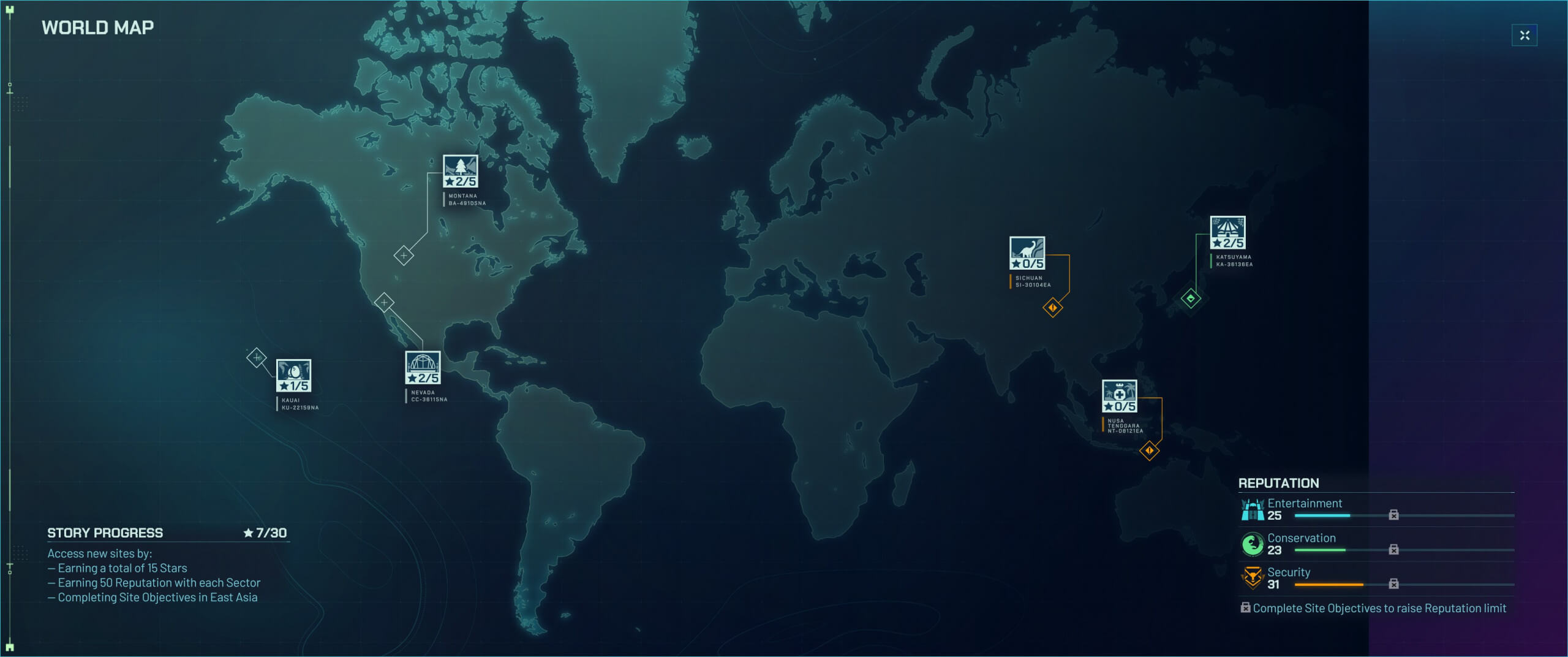
Here’s where it stands apart from Jurassic World Evolution 2:
Dynamic Ecosystems:
Dinosaurs now behave according to food chains and territorial relationships rather than simple comfort zones. Carnivores might hunt certain species but coexist with others, and herbivores form herds that migrate across your terrain. Your park feels like an ecosystem, not a zoo.
Breeding and Genetics Overhaul:
In Evolution 2, you modified genomes in a lab. In Evolution 3, you nurture real breeding lines, leading to generational evolution and variation. It’s part science experiment, part natural history documentary.
Terrain and Building Freedom:
The second game limited you to relatively flat, grid-based terrain. The new one gives you complete sculpting control, vertical layering, and modular architecture; the creative jump is enormous.
Expanded Campaign Scope:
Instead of the structured island progression from the earlier games, the campaign now moves globally, with narrative threads connecting diverse environments. It feels more like a cinematic adventure than a management checklist.
Smarter AI and Ranger Interaction:
Rangers, scientists, and vets now operate semi-autonomously, making their own decisions based on tasks you assign. Meanwhile, dinosaurs show far more believable behaviour, stalking, herding, even playfighting.
Community and Sharing Tools:
Parks can be uploaded and shared online, letting you tour or modify other players’ creations. Think of it as Jurassic World: Builder’s Edition.
In short, Evolution 3 takes everything that Evolution 2 built and fleshes it out into a living, breathing park simulation. It’s less a sequel and more a second chance at perfecting the dream.

Graphics & Audio
Simply put, Jurassic World Evolution 3 is stunning. I had everything on Ultra within the game and the optimisation on my PC (running a 5070ti and 7800X3D CPU) was fabulous.
Frontier’s artists have gone all-in on realism: scales glisten with moisture, feathers sway in the breeze, and eyes reflect sunlight with eerie intelligence. The improved lighting system gives the game a rich, cinematic tone, misty mornings feel tranquil, while night storms are nothing short of terrifying.
Dinosaurs have never looked this alive. You can see them yawn, shake water from their hides, or gently nudge their offspring. Each animation feels handcrafted and purposeful. The environments are equally gorgeous, dense jungles with swaying palms, shimmering lakes reflecting moonlight, and deserts where heat distortion ripples across the horizon.

Sound design deserves its own standing ovation. The iconic roars are as earth-shaking as ever, but the subtle details, chirping insects, distant rumbling thunder, and the clatter of guests panicking when alarms go off create an incredible sense of immersion. The soundtrack blends orchestral grandeur with touches of tension and wonder, perfectly echoing the spirit of Jurassic Park.
Voice acting also adds charm, with returning characters (yes, Dr. Ian Malcolm is back with his trademark dry wit) grounding the chaos in that familiar mix of philosophy and panic.
Longevity
Longevity is where Evolution 3 truly shines. The campaign alone offers over twenty hours of structured content, but the real staying power lies in its creative modes. Sandbox mode can easily devour dozens of hours as you experiment with new park layouts, biomes, and species interactions. The breeding system encourages replayability; discovering rare colour morphs or building the perfect lineage of raptors can become an obsession.
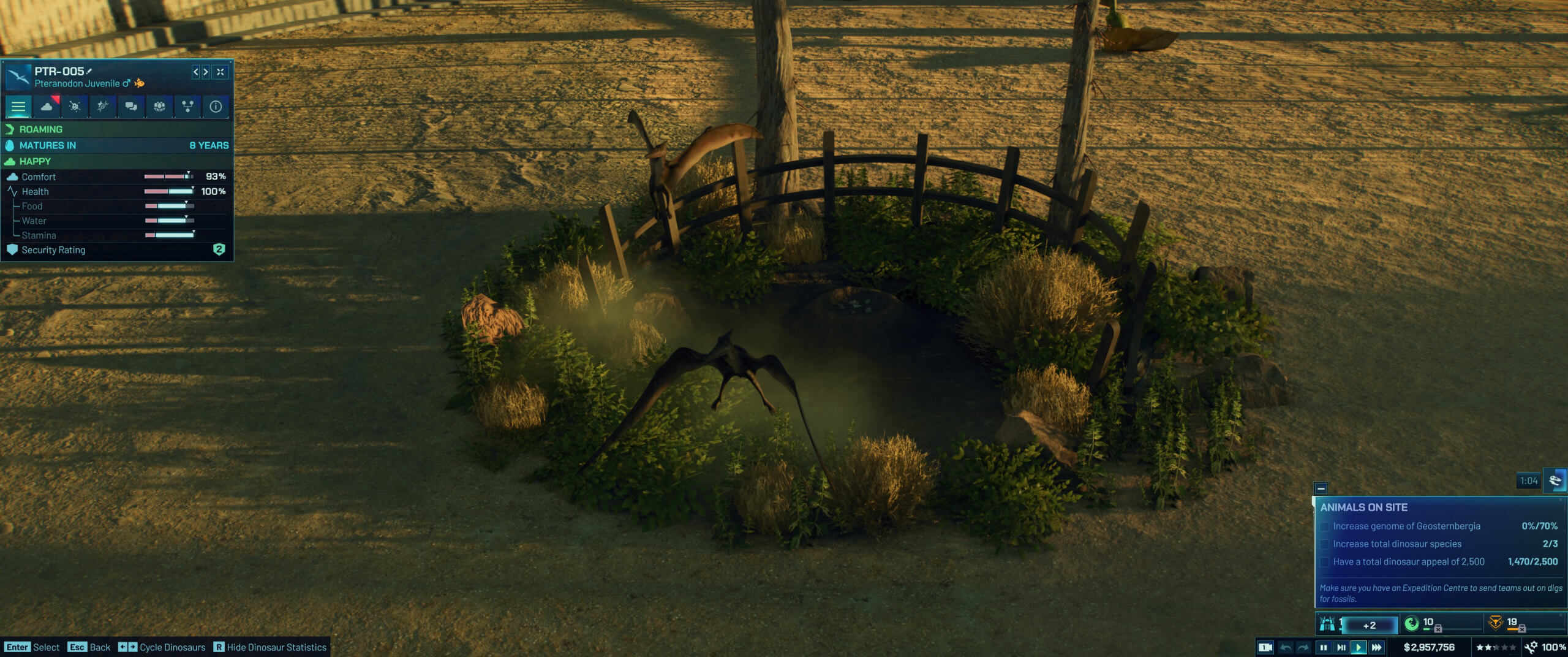
Frontier has also leaned into community content. User-generated parks, blueprints, and scenarios can be shared through an integrated hub, giving the game an almost endless stream of inspiration. Even months after release, it’s easy to imagine players trading “escape-proof park” challenges or lovingly crafted tributes to the original Jurassic Park film.
For those who crave difficulty, challenge mode and limited-resource scenarios keep the pressure on. And because the dinosaurs themselves evolve and interact differently in each playthrough, no two parks feel identical. Simply put, if you fall in love with its systems, Evolution 3 could live on your drive for years.
Final Thoughts
Jurassic World Evolution 3 isn’t just a bigger sequel; it’s the series finding its stride. It blends the managerial satisfaction of a city builder with the cinematic thrill of a monster movie, and for the most part, it succeeds beautifully. Sure, there are occasional rough edges, the odd pathfinding glitch or camera hiccup, the occasional overcomplicated menu, but those are small fossils in an otherwise living ecosystem.
The game’s attention to detail, freedom of creativity, and pulse-pounding moments of chaos make it a worthy evolution of the franchise. For players like me who loved Evolution 2, this is the upgrade you’ve been waiting for. For newcomers, it’s the ultimate entry point, a perfect storm of management, beauty, and barely-contained disaster. So, build your park, open the gates, and pray the fences hold. Because in Jurassic World Evolution 3, life doesn’t just find a way, it finds every way.
I give Jurassic World Evolution 3 the prestigious Thumb Culture Platinum Award!
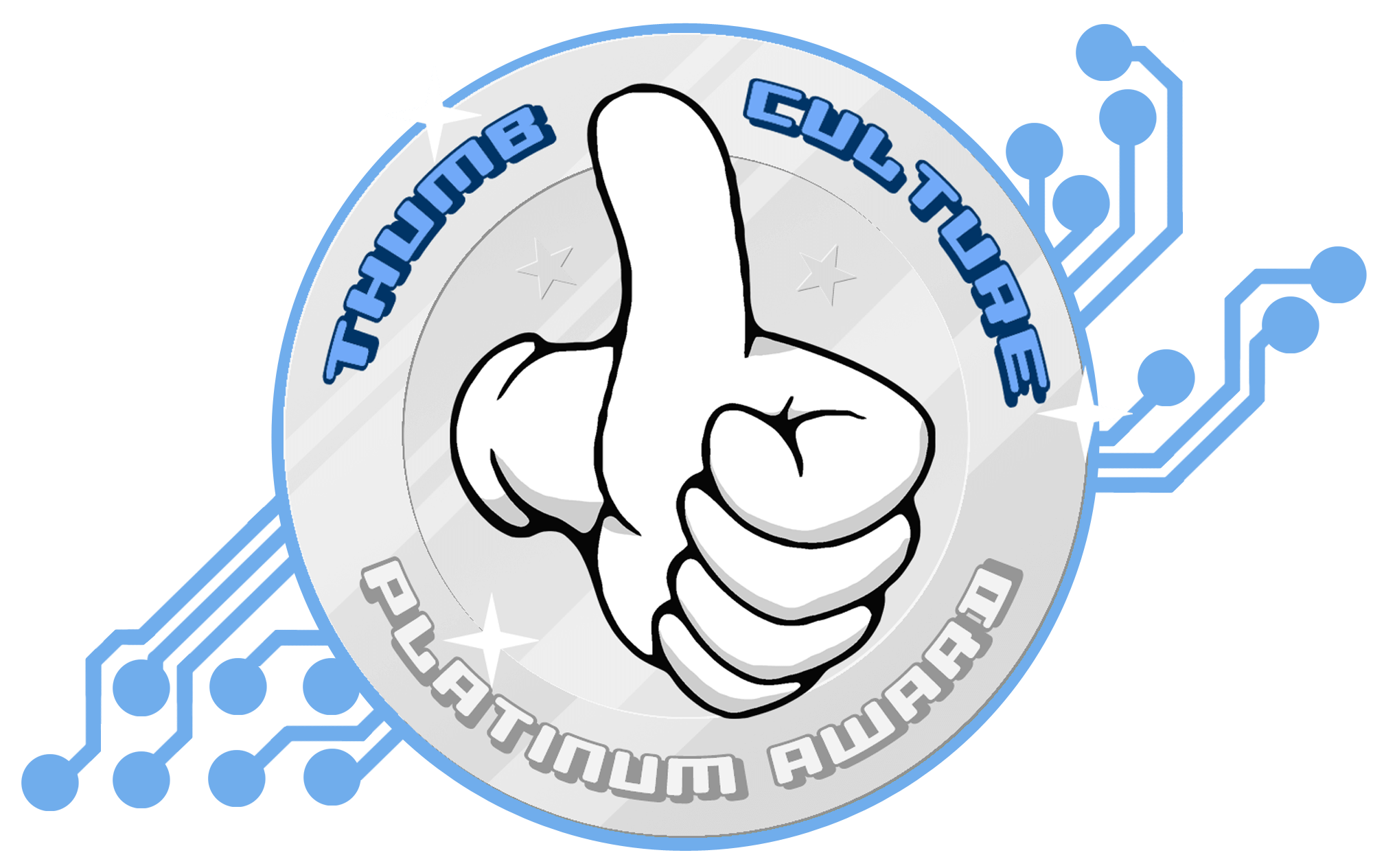
Disclaimer: A code was received in order to write this review.

YouTube | Facebook | Twitter | Instagram | Discord | Podcast
